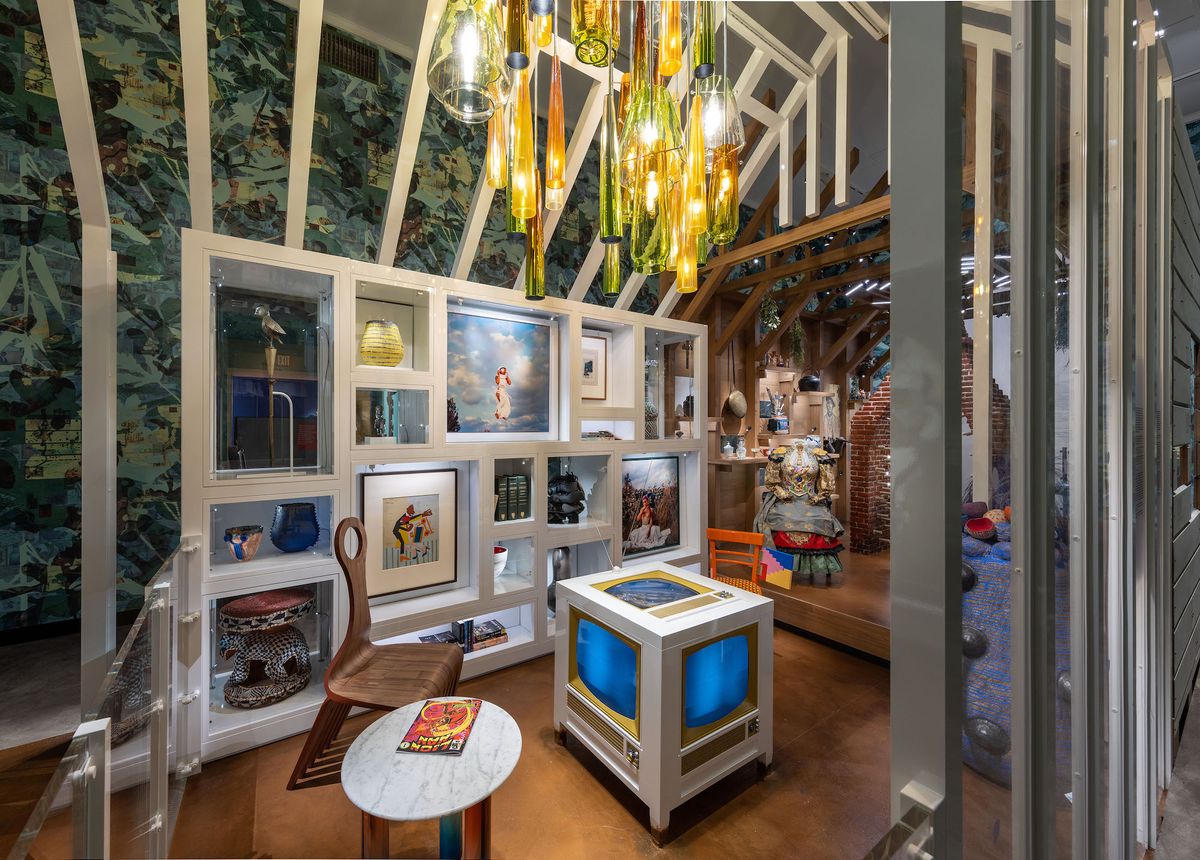Nestled among the Metropolitan Museum of Art’s vast collections of art and artefacts from a wide range of global cultures are the museum’s period rooms. They faithfully re-create the grand historical living spaces of wealthy Americans and Europeans. Remnants of colonial trade networks such as Damask silk, Persian rugs and polished silver figure prominently. Just past one such room, an opulent Venetian bedroom, is Before Yesterday We Could Fly: An Afrofuturist Period Room, a long-term installation unveiled this week that aims to upend the traditional concept of a period room and introduce viewers to artists and makers of the African diaspora.
The project comes as the museum itself is confronting its fraught history and diversifying its collections. The starting point for the exhibition is Seneca Village, a community of free Black people that thrived in the mid-1800s in what became Central Park, just steps from where the Met now stands. The installation envisions what could have been if the village had continued to prosper. It gathers artworks and objects from the museum’s collection as well as newly acquired and commissioned pieces.
The concept of Afrofuturism, which centers Black creativity and thought, gives the exhibition its framework and soul. Lead curator Hannah Beachler, best known for her design work on the film Black Panther and Beyonce’s Lemonade video, created a structure that straddles the past, present and future. It begins as a wooden shack, perhaps similar to those found in Seneca Village, and morphs into a futuristic structure with white metal planks that modernise and elevate its humble origins. Two ends of the structure are open, allowing a view through the ages. The hearth area is inspired by objects excavated by Columbia University’s Seneca Village Project. A rubber comb crowned with a chain design is one such object included in the show, and its historical significance is manifold.Rubber was a lucrative crop in Africa for European traders, making its presence in a free Black community in post-colonial North America both poignant and ironic.
Such historically charged objects are present throughout Before Yesterday. Delicate Venetian glass goblets reflect the raw materials that were taken from North Africa to create them. The familiar Afro comb is reimagined by Ethiopian American designer Jomo Tariku as a striking chair that would not be out of place in a mid-century home. The exhibition’s location within the museum, where the European and American wings meet, centers Africa as significant to the fortunes of these colonial powers. Among the newly commissioned works is a Henry Taylor portrait of Andrea Motley Crabtree, the first Black woman and first woman to serve as a deep-sea diver in the US Army. Taylor, whose paintings often embody the spirit of Afrofuturism, is particularly well suited to this exhibition.
As a step toward rectifying the lack of representation in the museum’s collections, Before Yesterday is a valiant start. The curators worked with many artists, designers and other creative minds to imagine this exhibition. Limited to working in what can best be described as a hallway, they may have had to edit and streamline their presentation. While other period rooms allow for open views and a sense of space, Before Yesterday occupies a narrow passage in which viewers may struggle to connect the objects on view with their explanatory signage. This show captures a sliver of the vast and diverse world of Black creativity.A single period room will hardly change the status quo.
- Before Yesterday We Could Fly: An Afrofuturist Period Room, Metropolitan Museum of Art, New York, long-term installation


